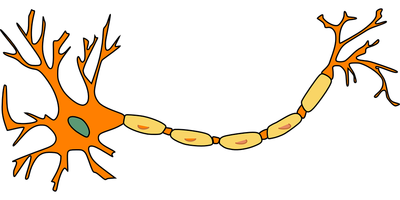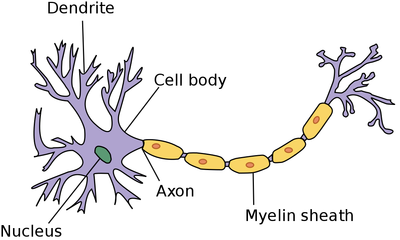Difference between revisions of "Neuron"
(→About Neurons) (Tags: Mobile edit, Mobile web edit) |
(→Adaptations of Neurons) |
||
| Line 30: | Line 30: | ||
|[[File:NeuronDiagram.png|center|400px]] | |[[File:NeuronDiagram.png|center|400px]] | ||
|- | |- | ||
| − | | style="height:20px; width:200px; text-align:center;" |A [[diagram]] of a [[neuron]]. | + | | style="height:20px; width:200px; text-align:center;" |A [[diagram]] of a [[Motor Neuron|motor '''neuron''']]. |
|} | |} | ||
Revision as of 09:55, 8 June 2019
Contents
Key Stage 3
Meaning
A nerve cell is a specialised cell in animals which transmits electrical impulses around the body.
Adaptations of Nerve Cells
- Nerve Cells have an elongated shape to send electrical impulses more quickly.
- Nerve Cells have branches called dendrites to link up to other nerve cells.
About Nerve Cells
- All nerves in the body are made of nerve cells.
- Nerve cells are specially adapted to send electrical signals quickly.
- Many nerve cells grouped together make nerve tissue.
Key Stage 4
Meaning
Neurons are specialised cells in the nervous system which transmits electrical impulses around the body.
Adaptations of Neurons
- Neurons have an elongated axon to send electrical impulses more quickly.
- Neurons have branches called dendrites to link up to other neurons.
- The axon of a neuron is covered in a myelin sheath which acts as an electrical insulator to maintain the strength of the impulse as it passes along the axon.
| A diagram of a motor neuron. |
About Neurons
- Neurons join together to form nerves.
- The point where two neurons meet is called a synapse.
- At the synapse between two neurons the electrical impulse must be transmited across the gap.
There are three different types of neuron you should know:

